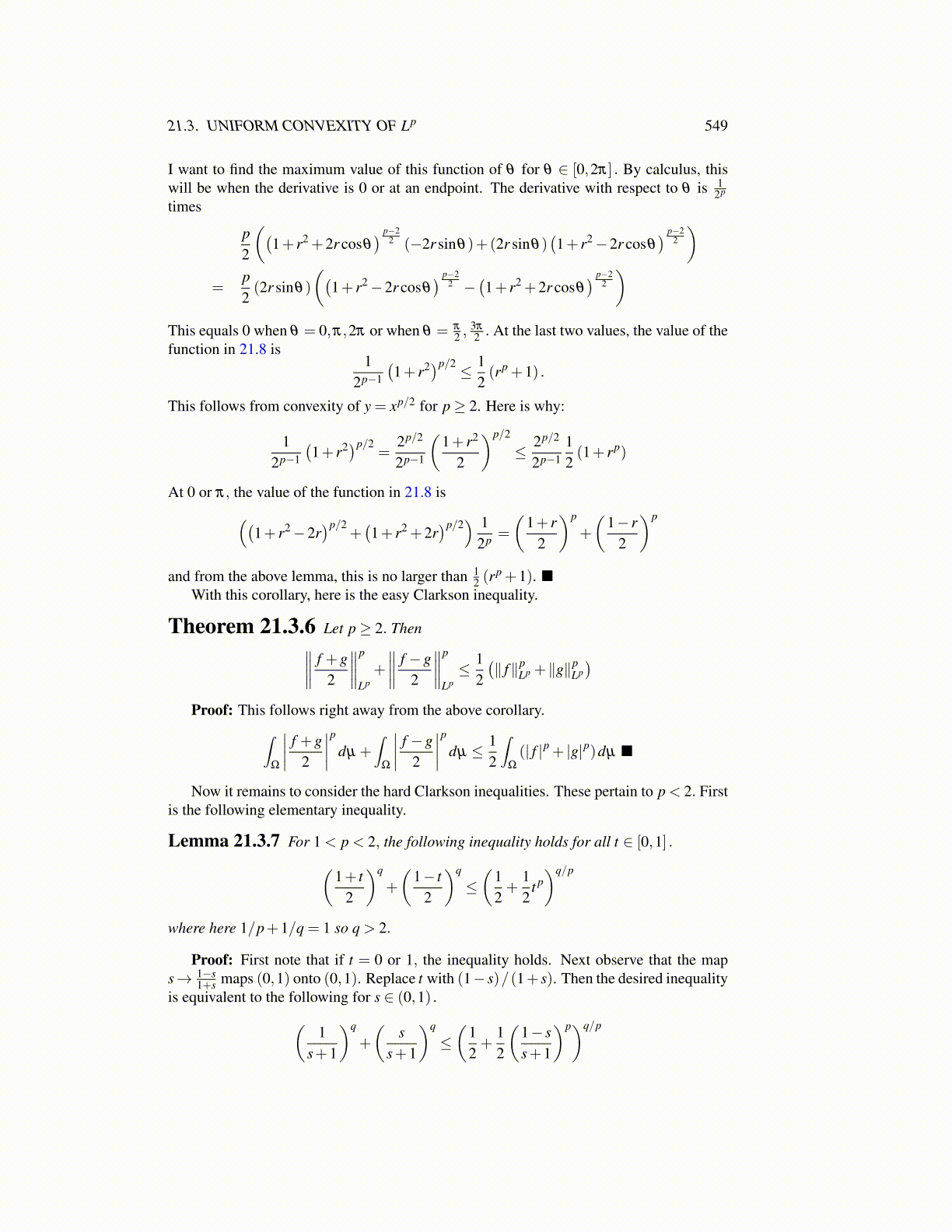
21.3. UNIFORM CONVEXITY OF Lp 549
I want to find the maximum value of this function of θ for θ ∈ [0,2π] . By calculus, thiswill be when the derivative is 0 or at an endpoint. The derivative with respect to θ is 1
2p
times
p2
((1+ r2 +2r cosθ
) p−22 (−2r sinθ)+(2r sinθ)
(1+ r2−2r cosθ
) p−22
)=
p2(2r sinθ)
((1+ r2−2r cosθ
) p−22 −
(1+ r2 +2r cosθ
) p−22
)This equals 0 when θ = 0,π,2π or when θ = π
2 ,3π
2 . At the last two values, the value of thefunction in 21.8 is
12p−1
(1+ r2)p/2 ≤ 1
2(rp +1) .
This follows from convexity of y = xp/2 for p≥ 2. Here is why:
12p−1
(1+ r2)p/2
=2p/2
2p−1
(1+ r2
2
)p/2
≤ 2p/2
2p−112(1+ rp)
At 0 or π, the value of the function in 21.8 is((1+ r2−2r
)p/2+(1+ r2 +2r
)p/2) 1
2p =
(1+ r
2
)p
+
(1− r
2
)p
and from the above lemma, this is no larger than 12 (r
p +1). ■With this corollary, here is the easy Clarkson inequality.
Theorem 21.3.6 Let p≥ 2. Then∥∥∥∥ f +g2
∥∥∥∥p
Lp+
∥∥∥∥ f −g2
∥∥∥∥p
Lp≤ 1
2(∥ f∥p
Lp +∥g∥pLp)
Proof: This follows right away from the above corollary.∫Ω
∣∣∣∣ f +g2
∣∣∣∣p dµ +∫
Ω
∣∣∣∣ f −g2
∣∣∣∣p dµ ≤ 12
∫Ω
(| f |p + |g|p)dµ ■
Now it remains to consider the hard Clarkson inequalities. These pertain to p < 2. Firstis the following elementary inequality.
Lemma 21.3.7 For 1 < p < 2, the following inequality holds for all t ∈ [0,1] .(1+ t
2
)q
+
(1− t
2
)q
≤(
12+
12
t p)q/p
where here 1/p+1/q = 1 so q > 2.
Proof: First note that if t = 0 or 1, the inequality holds. Next observe that the maps→ 1−s
1+s maps (0,1) onto (0,1). Replace t with (1− s)/(1+ s). Then the desired inequalityis equivalent to the following for s ∈ (0,1) .(
1s+1
)q
+
(s
s+1
)q
≤(
12+
12
(1− ss+1
)p)q/p